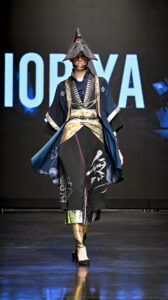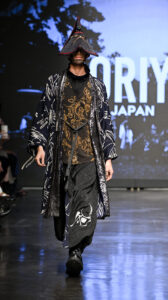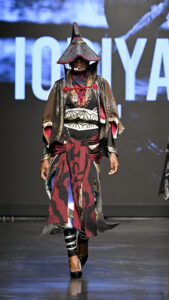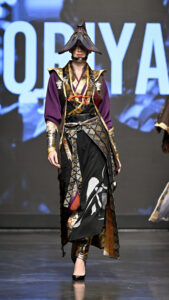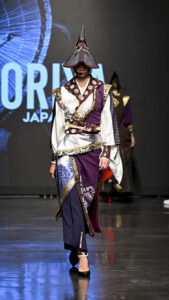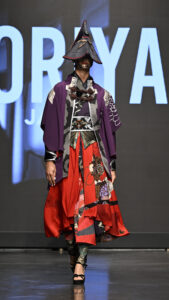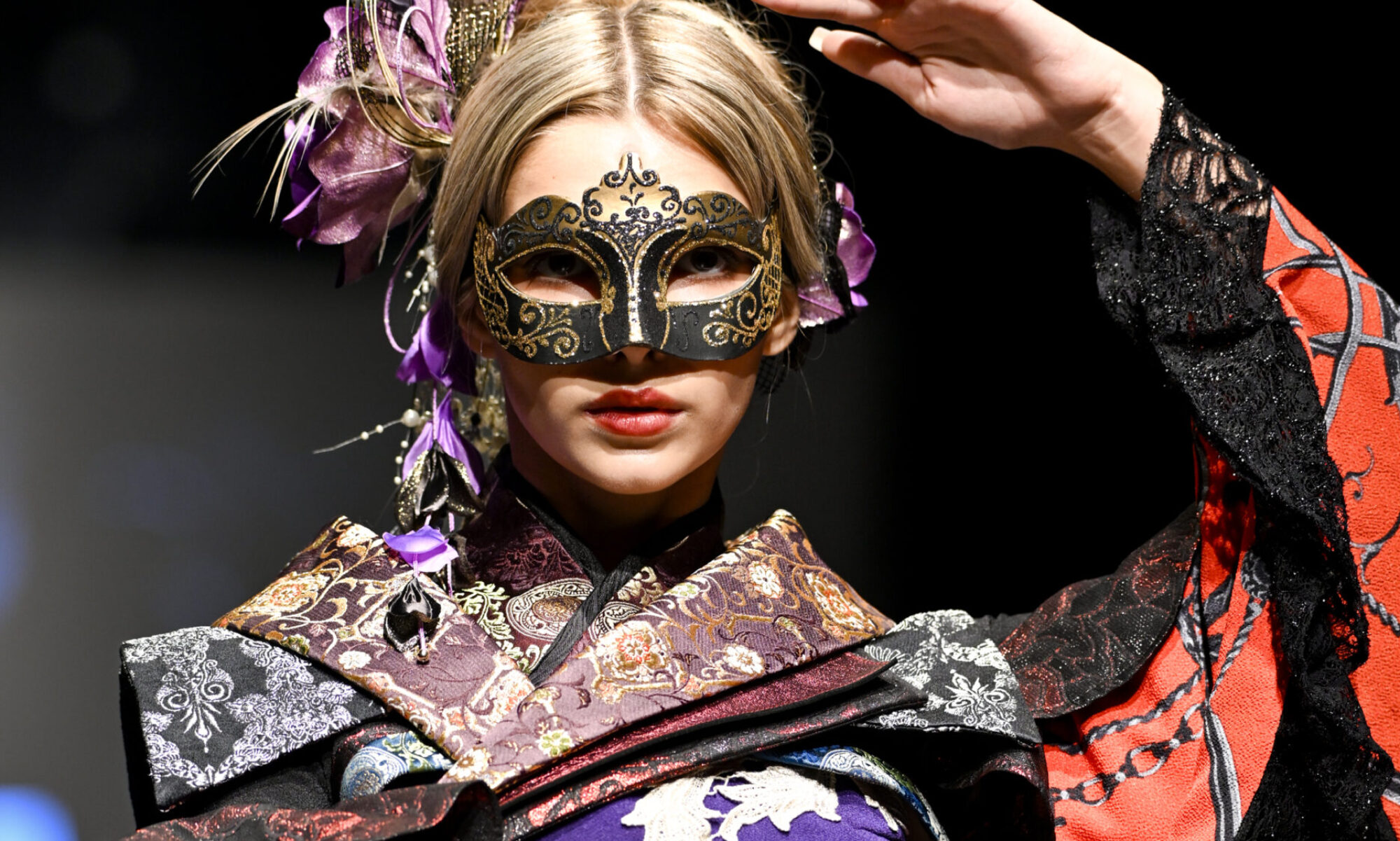The theme of the Paris collection was ”Nostalgia.” We incorporated design from various countries and created a worldview using Japanese textiles.We aim to promote cross-cultural exchange through costumes.
For special features and backstage information for each genre, please see the links for each genre.
Neo-Japan Mirage
A costume design that blends traditional Japanese aesthetics with Western Gothic elements, creating a unique and visually captivating ensemble. It evokes a mysterious and elegant atmosphere by combining modernity with the rich cultural depth of Japanese heritage.
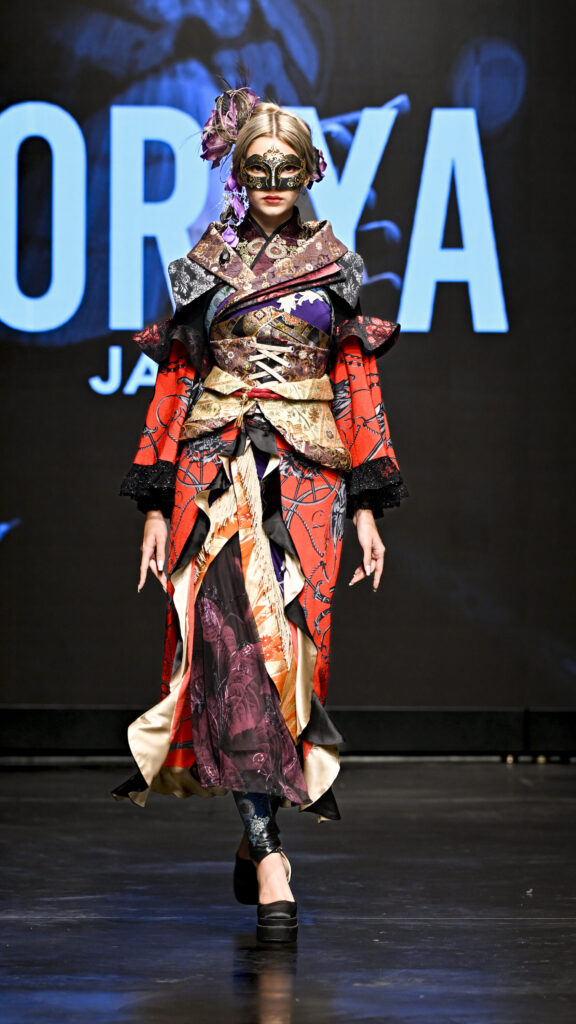
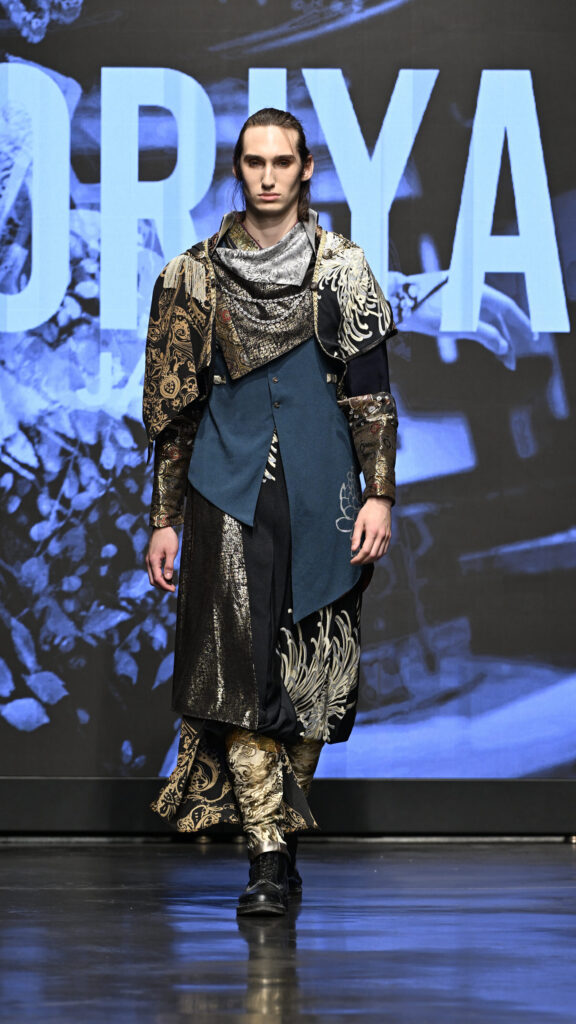
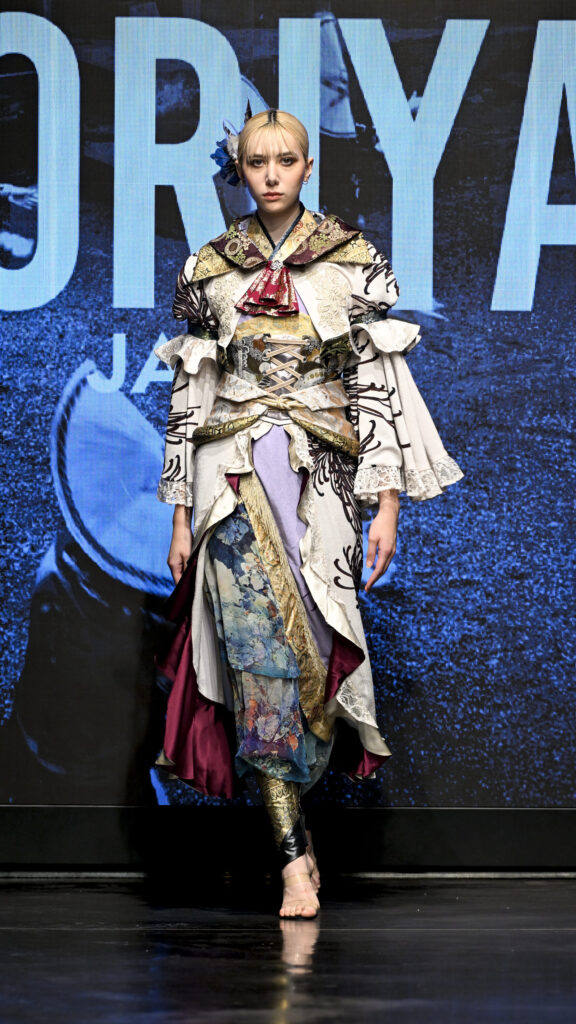

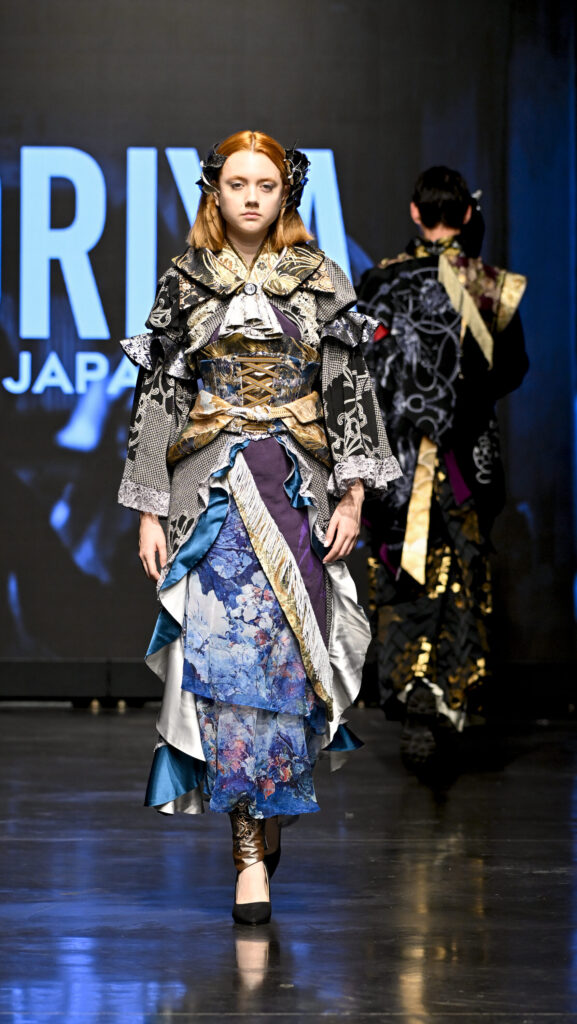
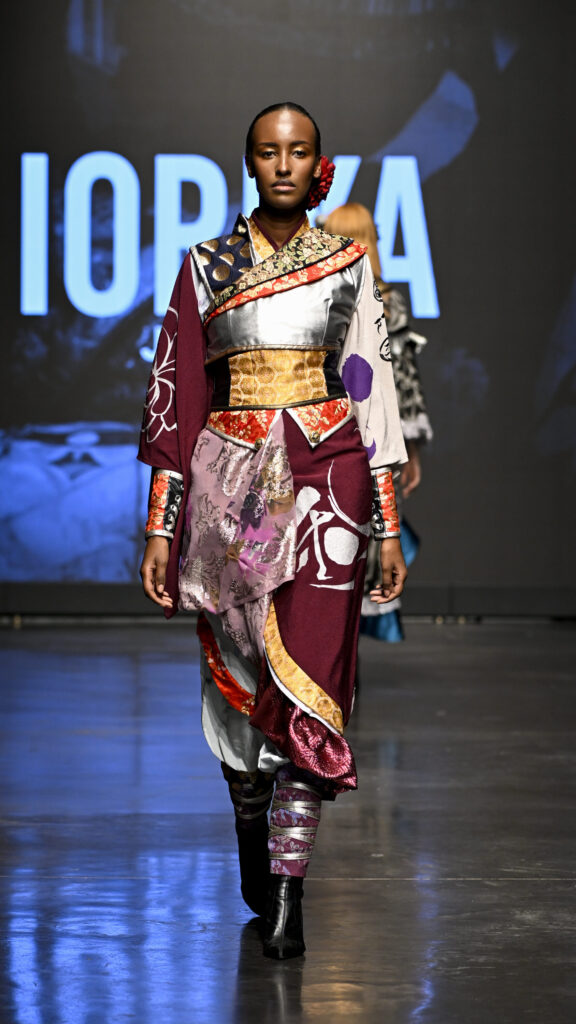
Wa Elegance Dress
The dress adopts the graceful and flowing silhouette of a kimono, with wide sleeves and a cinched waist, providing a timeless and flattering look. It uses traditional Japanese textiles like silk or contemporary fabrics with motifs such as cherry blossoms and waves, evoking authentic cultural richness.
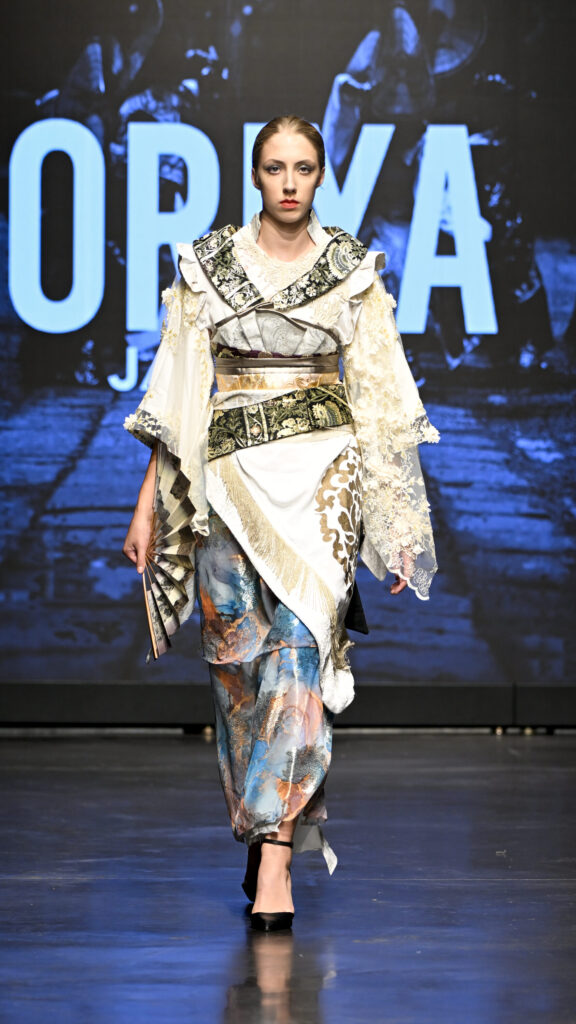
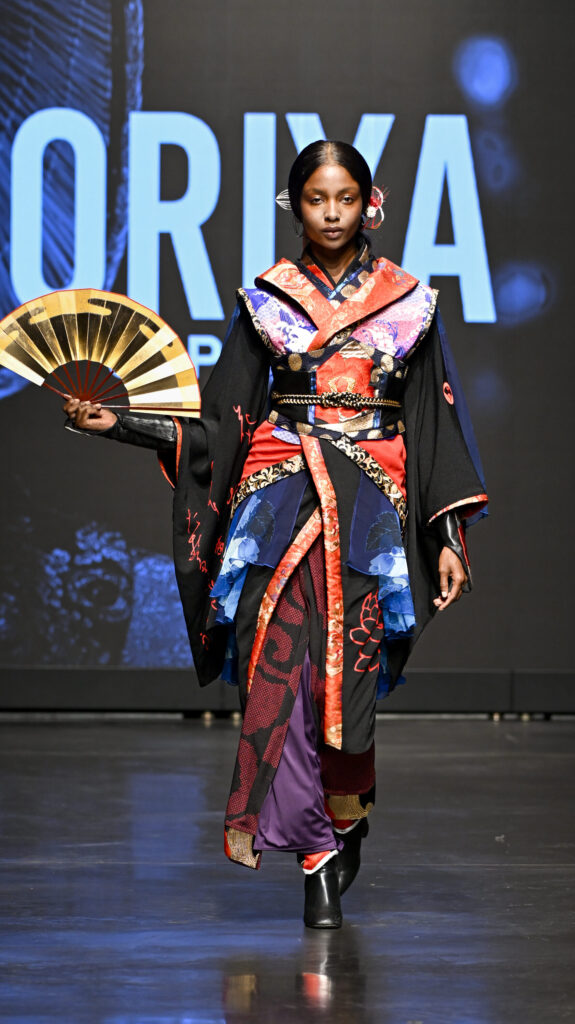
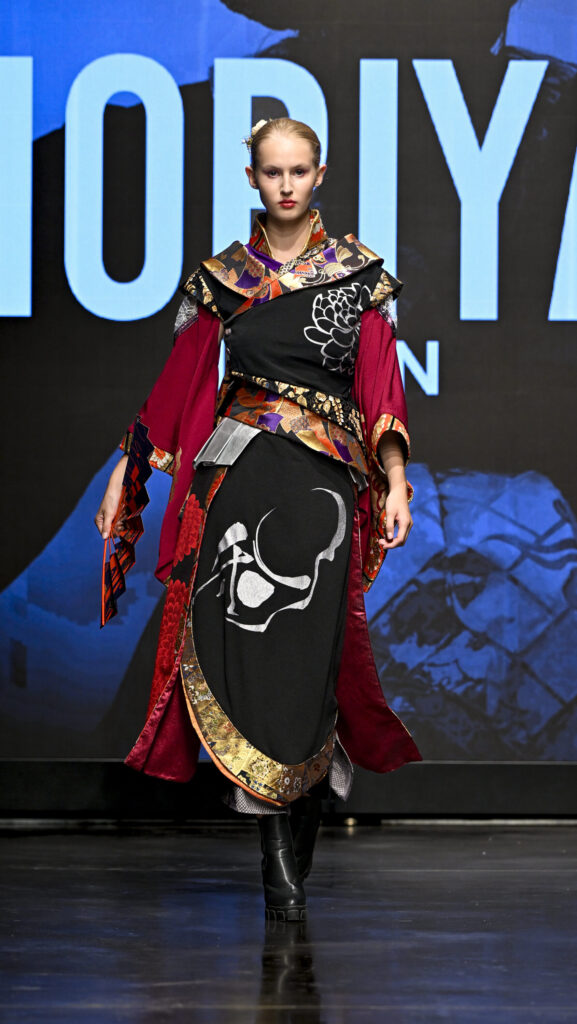

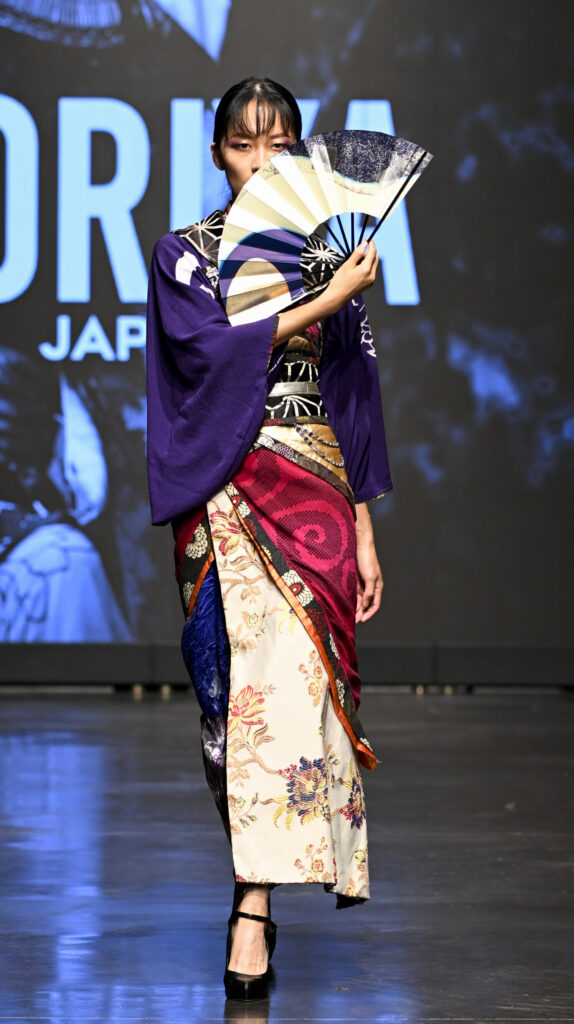
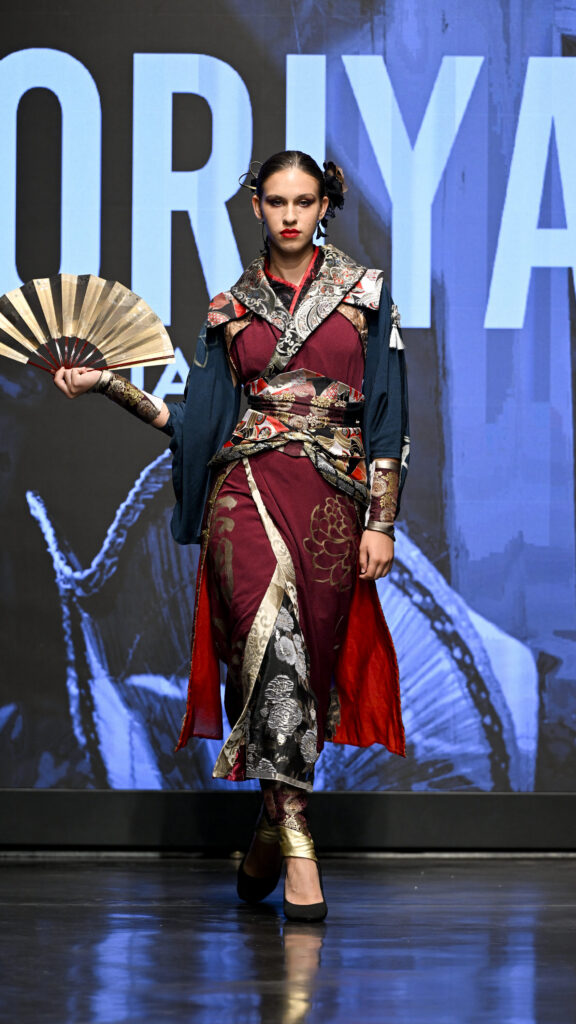
Wa Legacy Line
A costume design that embodies the essence of traditional Japan, featuring elegant kimono-inspired silhouettes, wide sleeves, and obi (sash) around the waist. It employs traditional Japanese color palettes with serene shades like deep indigo, cherry blossom pink, and earthy tones, expressing heritage and dignity.
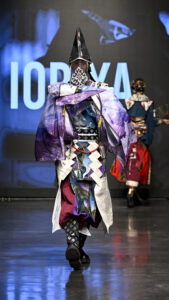
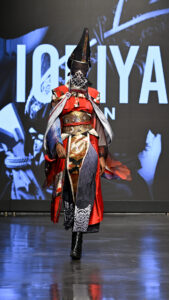
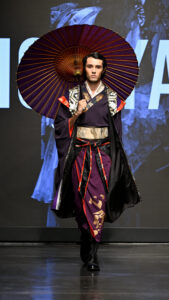
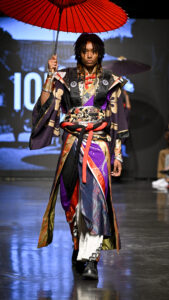
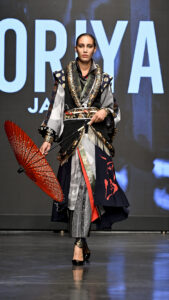
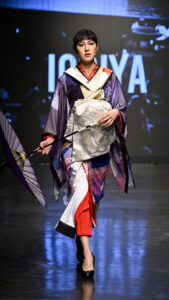
Ethno Couture
Costumes that incorporate traditional fabrics such as woven textiles, embroidery, or materials indigenous to various cultures. These designs reflect culturally significant color palettes and emulate traditional silhouettes ranging from flowing robes to fitted garments, blending global ethnic heritage with modern couture.
